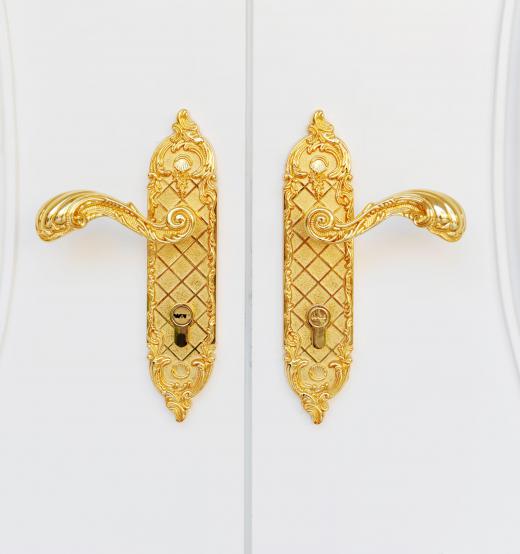The term backset is used to describe the location of a lock in relation to the edge of a door. This dimension is used for all types of locking devices, including cylindrical and mortise locks as well as deadbolts and handle sets. While some lock locations are fairly standard, they can vary based on hardware design, manufacturer, and region.
The backset of a door lock represents the distance between the centerline of a lockset and the edge of the door. Because most locks are installed through circular holes drilled in the door, the centerline of the bore hole can be used as a reference point when measuring the backset. This measurement should never be taken from the edge of the lock, and should always be taken from the center of the handle or lockset.

Lock backset is an important piece of information for homeowners looking to order new doors and locks. Door manufacturers need this measurement so they are able to correctly drill holes in the door to accommodate the locks. Most locks are made to work with only one backset dimension. If the lock dimensions do not match those needed for the door, the bolt will either extend too far past the edge of the door or will not extend far enough. In either of these scenarios, the door will not lock properly.
In the US and Canada, two standard dimensions are used. Most commercial doors have a backset of 2-3/4 inches (69.8 mm) while residential doors measure 2-3/8 inches (60.3 mm). In the UK and much of Europe, these dimensions can vary from 25 to 60 mm, and many medallion knobs are placed in the center of the door, creating a very large backset. Many aluminum doors are known for their narrow stiles, which may be as small as 1 inch (25 mm). Because the stile on these doors is so narrow, they also have a relatively small backset, often measured in millimeters because it is so small.
Some modern locks feature an interchangeable backset. These locks have a switch or adjustment of some kind that can shorten or lengthen the bolt to fit various sizes of doors. This change is generally easy to make, and can be done by hand without the use of special tools. This type of feature is not common however, so careful consideration should be taken when ordering locks to ensure that it will fit the door.
